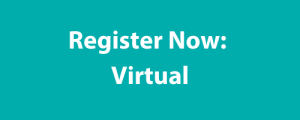
Year of the Cicada:
Buzzing with 17 Years of Biodiversity Achievements
In conjunction with the 2024 Biodiversity Heritage Library (BHL) Annual Meeting, the Field Museum will host a public symposium on 16 May 2024. The symposium will be open to all attendees of the BHL Annual Meeting as well as others from the biodiversity community.

In May 2024, the dual emergence of Broods XIII and XIX of the periodical cicadas (Magicicada) will coincide with the 17th anniversary of the launch of the BHL portal. To commemorate this unique convergence, BHL will recognize and celebrate notable achievements in both the biodiversity community and the BHL community in the past 17 years.
 Returning to its roots in Chicago, the BHL community is thrilled to gather at the Field Museum, a founding partner of BHL since 2006. The Chicago Botanic Garden, co-host for the Annual Meeting, joined BHL in 2014. Chicago has been pivotal in BHL’s journey, hosting early technical planning sessions in 2004 and the 2011 global biodiversity community meeting titled Life and Literature at The Field Museum.
Returning to its roots in Chicago, the BHL community is thrilled to gather at the Field Museum, a founding partner of BHL since 2006. The Chicago Botanic Garden, co-host for the Annual Meeting, joined BHL in 2014. Chicago has been pivotal in BHL’s journey, hosting early technical planning sessions in 2004 and the 2011 global biodiversity community meeting titled Life and Literature at The Field Museum.
The life cycle of Magicicada is amongst the longest in the insect world. Over the past seventeen years, the biodiversity landscape has undergone significant transformations, with the establishment and expansion of BHL being a prominent development. The symposium will present topics that both reflect on past achievements while also looking ahead to future endeavors.
The symposium will include a keynote address by Dr. Gene Kritsky, a distinguished author on Magicicada, three speakers from the local biodiversity community in the Midwest, and four speakers from across the BHL Consortium.
Date and Time: 16 May 2024, 14:00-17:30 CDT
Location:
Field Museum
Montgomery Ward Lecture Hall
1400 S. Dusable Lake Shore Drive
Chicago, IL 60605
The event will also be livestreamed via Zoom Webinar for virtual attendance.
Registration
The hybrid event is free and open to the public. Advanced registration is required for in-person and virtual attendance.
Accessibility
The Field Museum strives to ensure accessible programming for all. If you require an accommodation, please contact Gretchen Rings (grings@fieldmuseum.org) by Friday, May 3.
Program Details
As part of its 2024 Annual Meeting, BHL is hosting a public symposium on 16 May 2024 at the Field Museum in Chicago, Illinois. Themed “Year of the Cicada: Buzzing with 17 Years of Biodiversity Achievements“, the program will include a keynote by Dr. Gene Kritsky on the dual emergence of Broods XIII and XIX of the periodical cicadas (Magicicada), as well as talks from local biodiversity experts and partners from across the BHL consortium sharing major achievements of the past 17 years.
Schedule
13:30-14:00 CDT | Doors Open
14:00-14:05 CDT | Welcome and Introduction
David Iggulden, BHL Chair and Head of Data and Digital, Library and Archives, Royal Botanic Gardens, Kew
14:05-14:35 CDT| Keynote: A Tale of Two Broods: The 2024 Emergence of Periodical Cicada Broods XIII and XIX
Dr. Gene Kritsky, Professor Emeritus of Biology at Mount St. Joseph University and Chief Science Officer at Center for IT Engagement (cITe Inc.)
A Tale of Two Broods previews the 2024 dual emergence of Broods XIII and XIX. The last time these broods emerged together was 1803. Periodical cicadas are bugs of history, and understanding their biology and evolution has required the efforts of many entomologists over the past four centuries. Periodical cicadas are also bugs of climate: the evolution of their unique and lengthy life cycle was driven by the beginning of the last ice age, and the distribution of the broods was influenced by the retreat of the ice sheet. Even today, the timing of their adult emergence is dictated by our warming world.
14:35-14:45 CDT | Q&A
14:45-15:30 CDT | Symposium Part 1
Moderator: Leora Siegel, Senior Director, Lenhardt Library, Chicago Botanic Garden
Managing Metacollections of Exceptional Species: Adapting Zoo Protocols for Better Botanic Garden Living Collection Management
Kayri Havens, Chief Scientist and Negaunee Vice President of Science, Chicago Botanic Garden
For exceptional plant species, i.e. those not amenable to seed banking, most gardens turn to living collections for ex situ conservation purposes. However, living plant collections will inevitably suffer from genetic erosion and often the loss of demographic stability over multiple generations limiting their value for future restoration efforts. Faced with similar issues in captive animal populations, the zoo community developed a pedigree-focused approach to support long-term viability and minimize genetic loss in their collections. We are adapting their model for plants by (1) modifying pedigree management software PMx for plants; (2) creating a pedigree tracking module in BGCI’s PlantSeach database; and (3) testing the approach in a variety of critically endangered species held in multiple botanic garden collections.
Scientific Names Index: How To Perfect It?
Dmitry Mozzherin, Assistant Research Scientist, Biodiversity Informatics, University of Illinois Urbana-Champaign
Geoffrey D. Ower, Research Programmer, University of Illinois Urbana-Champaign
BHL is a vast repository of open biodiversity literature. In collaboration with BHL for over 10 years, the Global Names (GN) project has developed tools to rapidly detect scientific names. We’ve scanned the entire BHL corpus in hours, identifying 12 million name-strings with 250 million occurrences. However, challenges remain, including abbreviated genus names and false positives due to ambiguous terms. To address this, we’ll employ statistical methods and BHL’s taxonomic profiles to expand abbreviated names. Machine learning will analyze context, helping us distinguish true scientific names from common words, improving accuracy. Additionally, by addressing false positives and learning biological context, we can refine algorithms to detect misspelled names, expanding our name index. Developing a semantic search capability for BHL is also included in our effort to increase usability of BHL. This will empower researchers and the public to find information about specific taxa within the BHL’s extensive collection.
Articles, Annotation, and AI
Roderic Page, BioStor
A key challenge facing BHL is the mismatch between its content (scanned volumes) and the typical unit of scholarly work (individual articles). Semi-automated methods used by BioStor have extracted some 240,000 articles from BHL, but this barely scratches the surface of the task. This talk will describe experiments using machine learning to automate extracting articles from BHL scans. Machine learning also offers exciting possibilities for text-mining BHL content, beyond indexing by taxonomic names. For example, being able to text mine for citations of DNA sequences and specimens from natural history collections would give BHL an important role to play in the Make Data Count initiative.
15:30-15:45 CDT | Q&A
15:45-16:00 CDT | BREAK
16:00-17:00 CDT | Symposium Part 2
Moderator: Gretchen Rings, Museum Librarian & Head of Library Collections at the Gantz Family Collections Center, Field Museum
How Have Pikas Successfully Colonized the Tibetan Plateau?
Anderson Feijó, Assistant Curator of Mammals, Field Museum
Living at high altitudes is a great challenge for most animals given the low oxygen levels, cold temperatures, and high solar radiation. Notably, high elevations combine some of the stressful conditions present in subterranean (chronic hypoxia) and desert (reduced food supply, short growing season, high predator exposure) environments. On the Tibetan plateau, the highest plateau on Earth where the average altitude is over 4000 meters (~13000 feet), pikas exhibit their maximum diversity with 13 species. In this talk, I will introduce some of the genetic and morphological adaptations our recent projects have uncovered that allow these species to thrive on the roof of the world. In particular, I will highlight cranial adaptations related to resource use that led to specialized forms as well as adaptations in genes that allow pikas to survive under hypoxic and cold conditions. Pikas represent a clear example that life in extreme environments is only possible through multilevel adaptations to both physical and biotic stresses. Their low tolerance to warm environments makes them important sentinels to global warming.
Diversity and Evolutionary History of Horse Flies
Maureen Turcatel, Collections Manager, Field Museum
The family Tabanidae, commonly known as horse flies or deer flies, represents the largest group of bloodsucking insects, comprising approximately 4400 species worldwide. The majority of adult females are blood-feeders, and some can be responsible for the mechanical transmission of parasites. While most species target large mammals for blood meals, a minority feed on reptiles or birds. Notably, horse flies also play a significant role as pollinators, with all males and some females exclusively feeding on nectar and pollen. Molecular evidence strongly supports the monophyly of Tabanidae. However, traditional multi-locus methodologies proved largely inconclusive to reconstruct the relationships within certain major lineages of horse flies. Emerging next-generation sequencing techniques and phylogenomic methodologies, such as Ultraconserved Elements (UCE), hold promise for providing a more refined understanding of the evolutionary history of these flies. Preliminary findings from the assembly of the first high-quality genome of a horse fly are presented, alongside a brief overview of the largest collection of the Field Museum’s largest collection: the Insects, Arachnids, and Myriapods collection.
BHL and the Wikiverse
Siobhan Leachman, Chair, BHL-Wiki Working Group
BHL provides a rich source of information for use in Wikipedia, Wikicommons and Wikidata. BHL contributions such as the BHL Field notebooks project, the BHL Flickr photostream and the use of the BHL creator identifier in Wikidata highlight the benefits of better integration between BHL and the Wikiverse. The BHL Field notebooks project inspired Wikipedia editors to enrich Wikipedia articles. The digitisation and transcription of field notebooks in the Smithsonian Transcription Center and in DigiVol makes biodiversity knowledge more accessible and reusable for Wikipedians. The upload of BHL Flickr images into Wikicommons empowers the addition of metadata and the linking of images to their creators and source publications. The BHL Flickr photostream also inspires research into women illustrators and resulted in the BHL Her Natural History campaign. Finally the use of the BHL creator identifier in Wikidata has resulted in the BHL catalogue being enriched. These examples illustrate how the relationship between BHL and the Wikiverse enriches the biodiversity knowledge ecosystem and have motivated the creation of the BHL white paper Unifying Biodiversity Knowledge to Support Life on a Sustainable Planet as well as the formation of the BHL-Wiki working group.
Unlocking Australia’s biodiversity: Celebrating 50 Australian BHL contributors
Nicole Kearney, Manager, BHL Australia and Chair of BHL Persistent Identifier Working Group (PIWG)
This year, BHL Australia celebrated a significant milestone: we uploaded literature onto BHL on behalf of our 50th Australian organization. BHL Australia began operation in 2010 with just one organization, Museums Victoria. Since then, it has grown into a national project with organizations contributing biodiversity knowledge from across the country. These organizations include Australia’s museums, herbaria, state libraries, universities, government agencies, royal societies and natural history publishers. Together they have contributed over 580,000 pages of biodiversity knowledge from the 1600s through to the current year. BHL Australia differs from most BHL operations. While we have a single scanner and a single scanning technician, we are nationally funded (by the Atlas of Living Australia / CSIRO) to make the country’s biodiversity literature freely accessible online. Most of our contributing organizations lack the resources to do this work themselves. BHL Australia thus plays a pivotal role in providing access to this information. BHL Australia is also celebrating being awarded two further grants, which are funding the digitization of the publications of regional field naturalist clubs and the sharing of their incredible contribution to our social and natural history. This talk will showcase the achievements and highlights of BHL’s endeavors in Australia.
17:00-17:15 CDT | Q&A
17:15-17:30 CDT | Closing Remarks from Chair
David Iggulden, BHL Chair and Head of Data and Digital, Library and Archives, Royal Botanic Gardens, Kew
Recordings
Recordings of each session will be made available on the BHL YouTube channel shortly after the event.
Code of Conduct
By participating in any activity associated with BHL, you agree voluntarily to abide by the BHL Code of Conduct. The goal of the BHL Code of Conduct is to foster an environment, whether virtual or in-person, of genuine and mutual respect among its community members.

